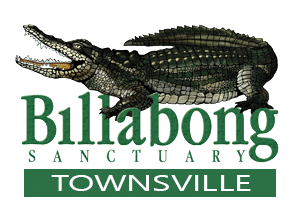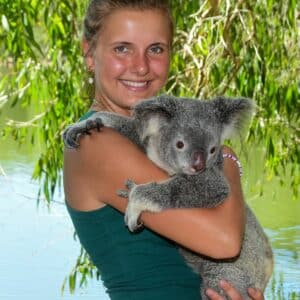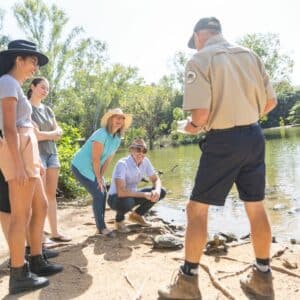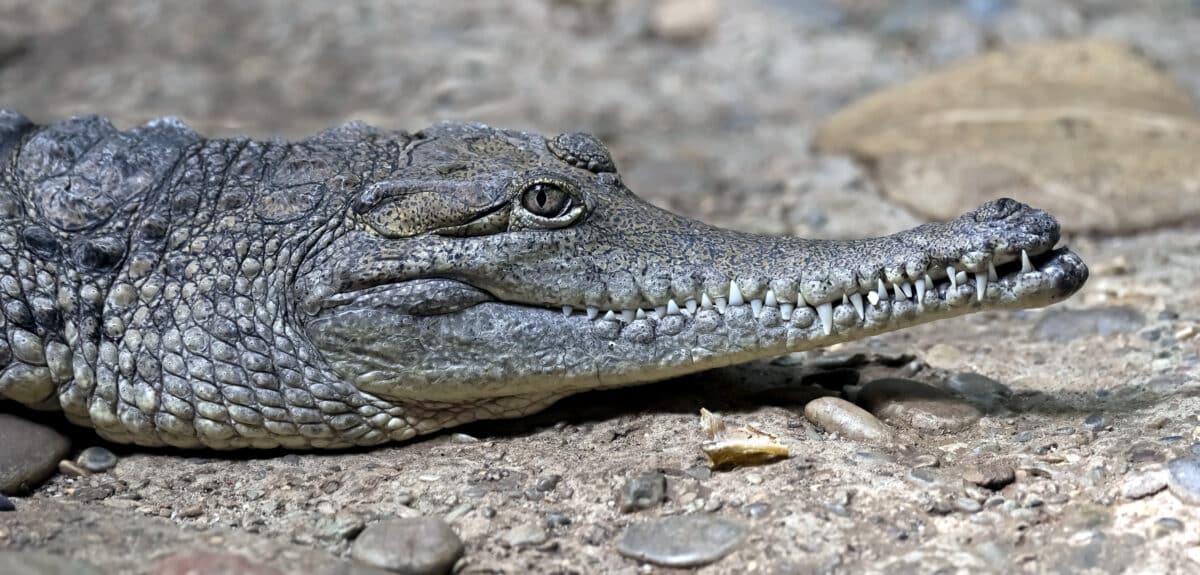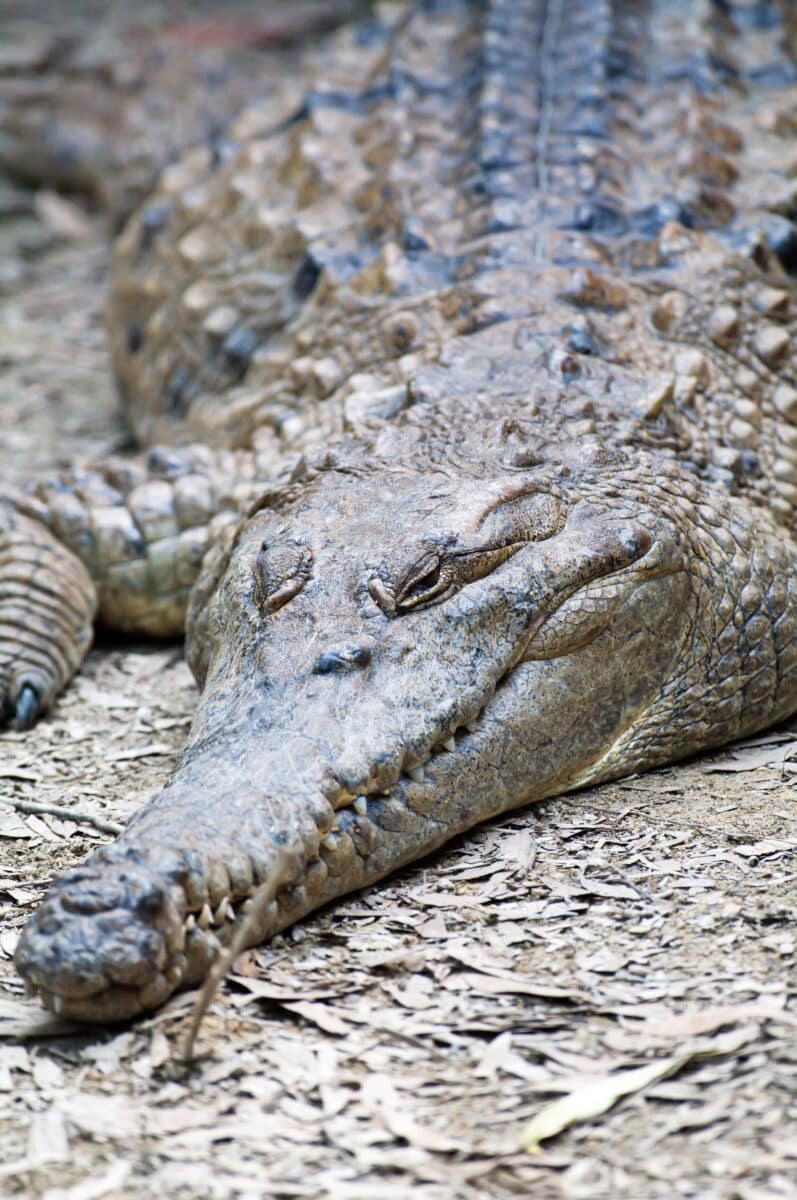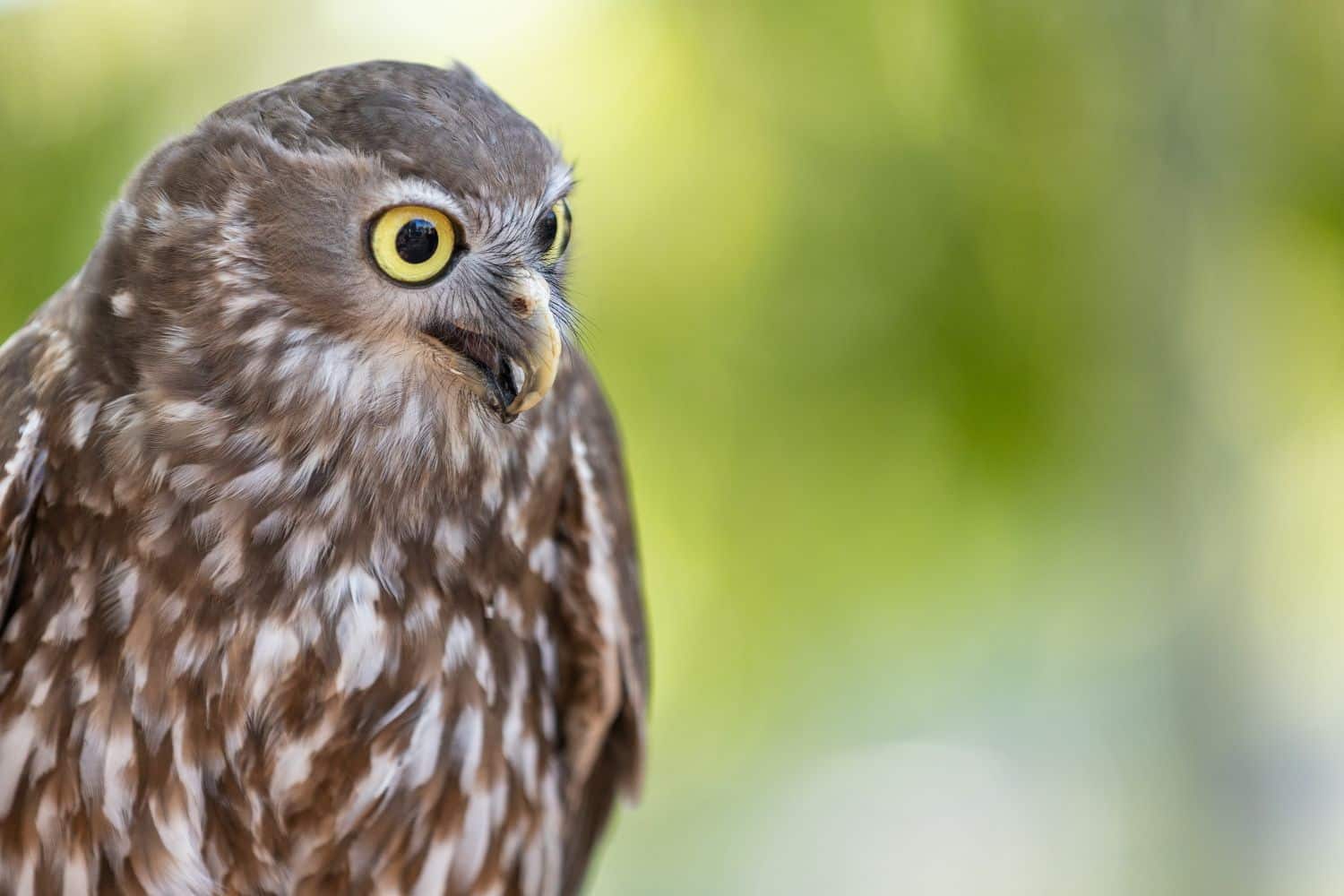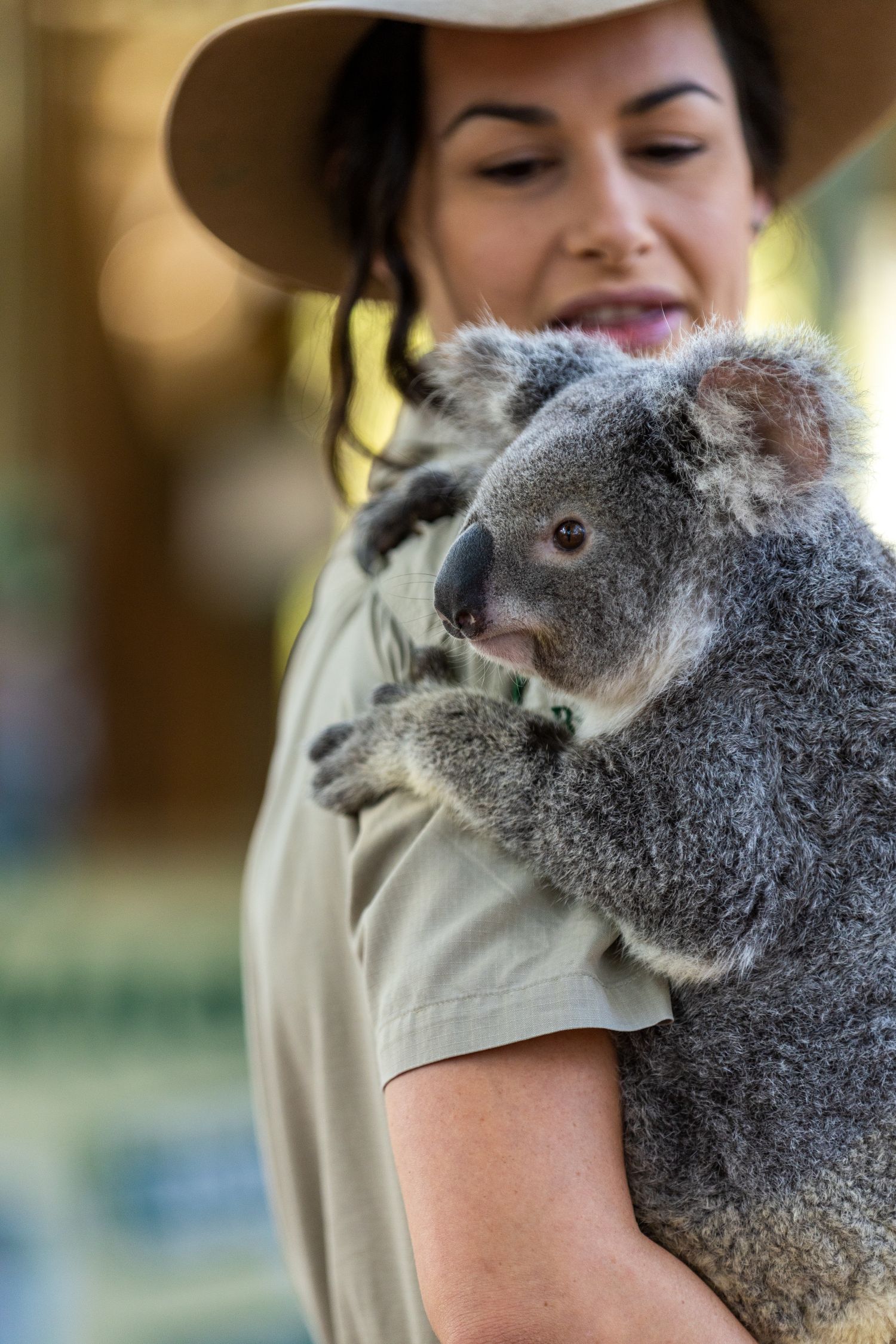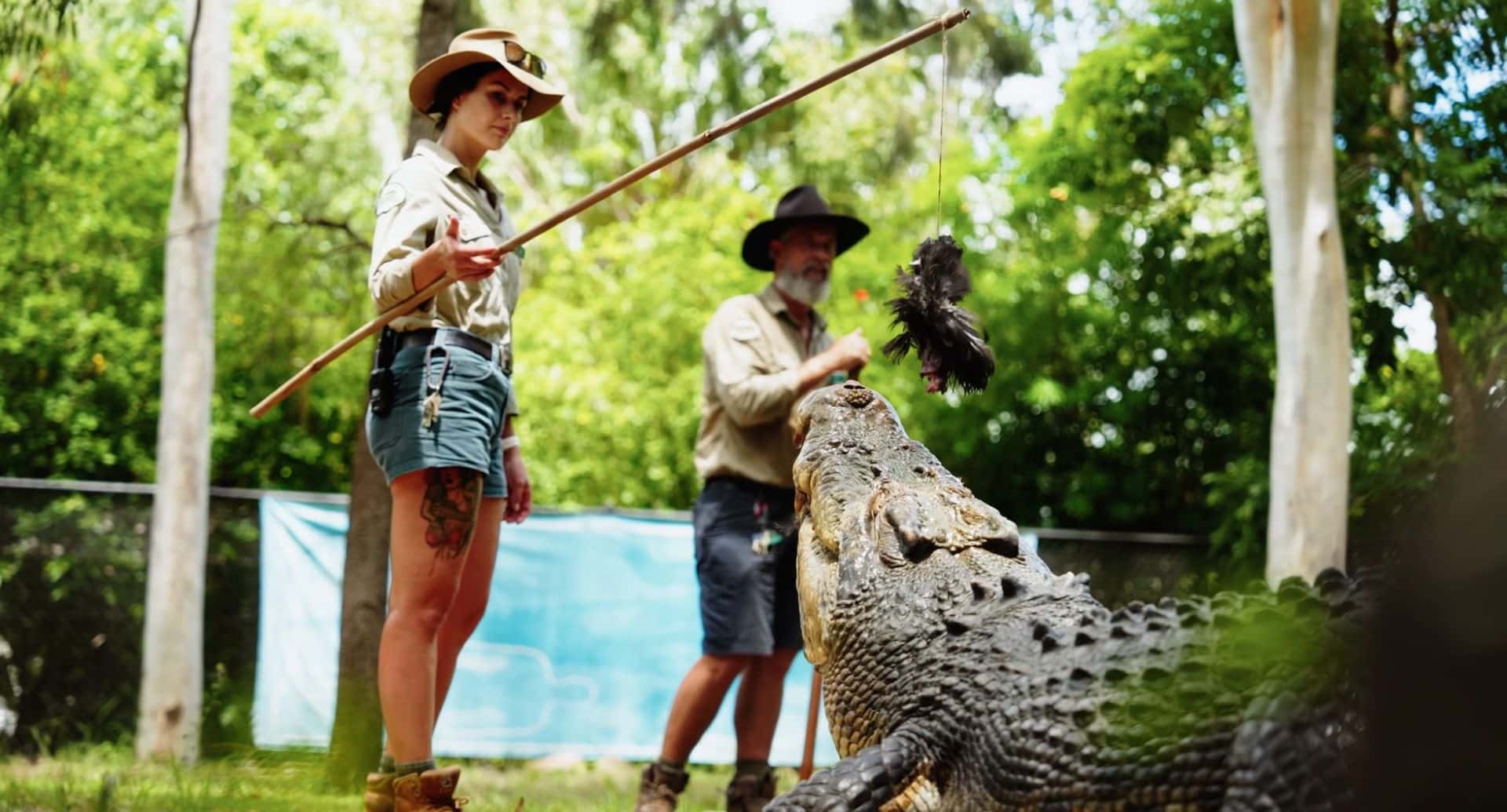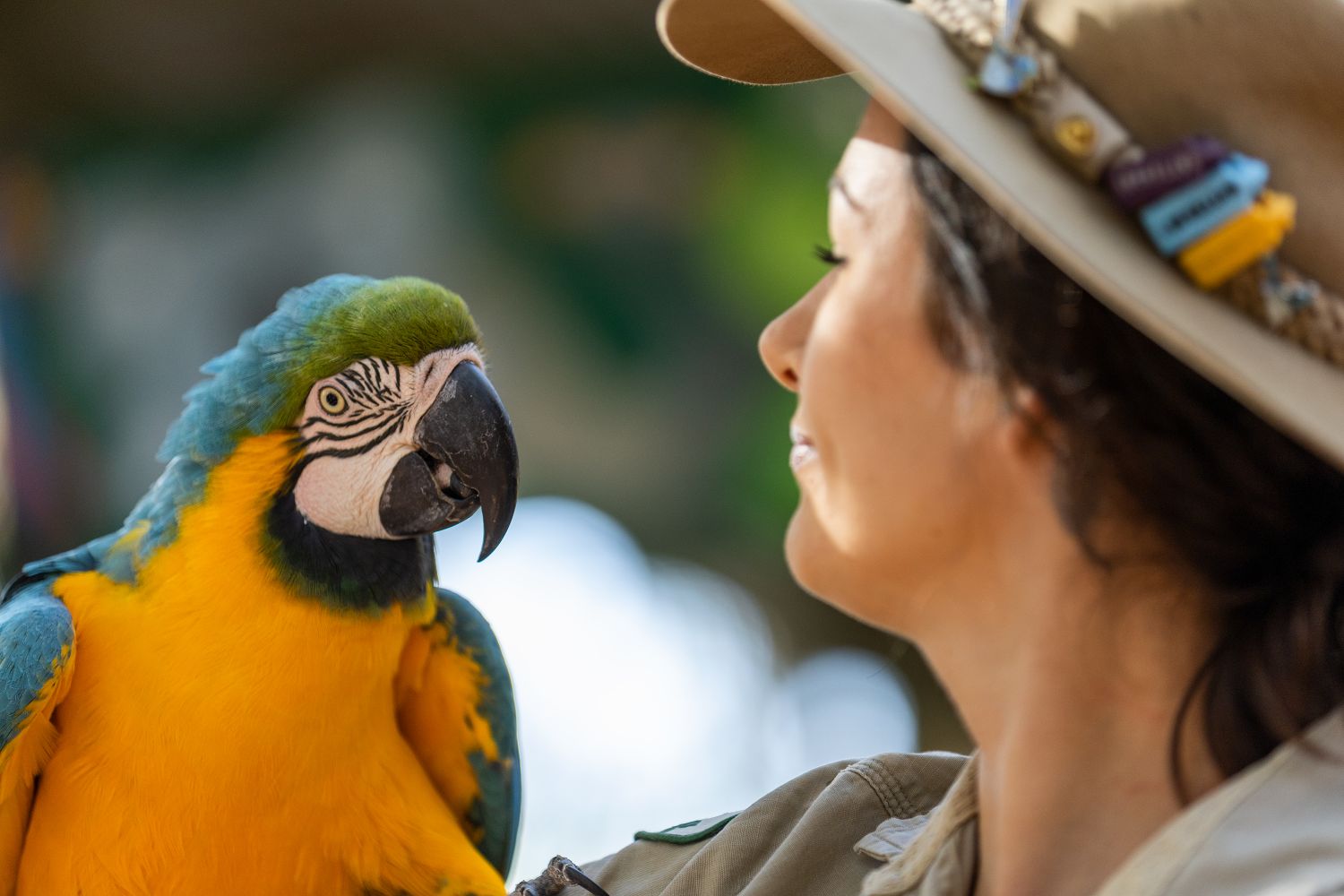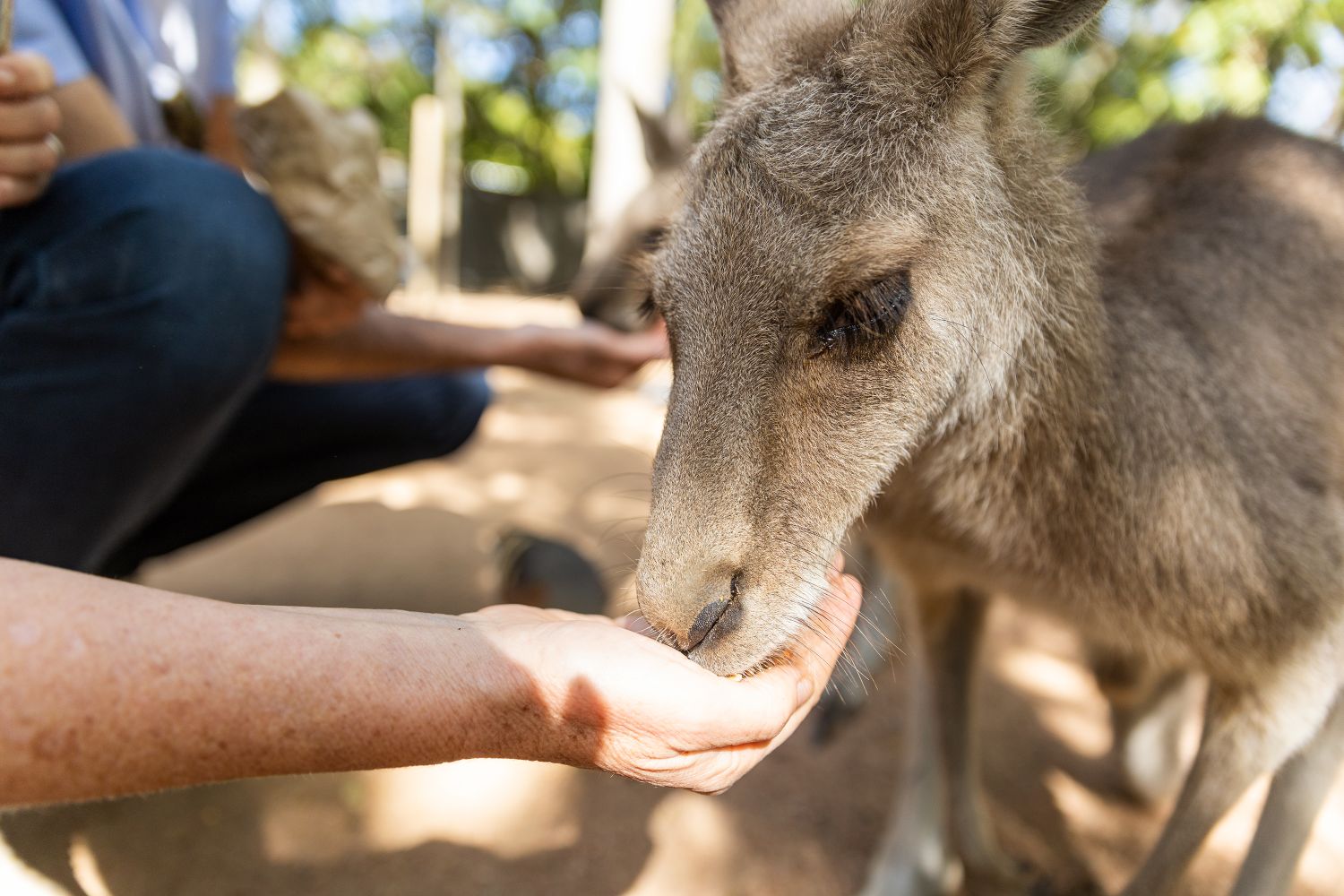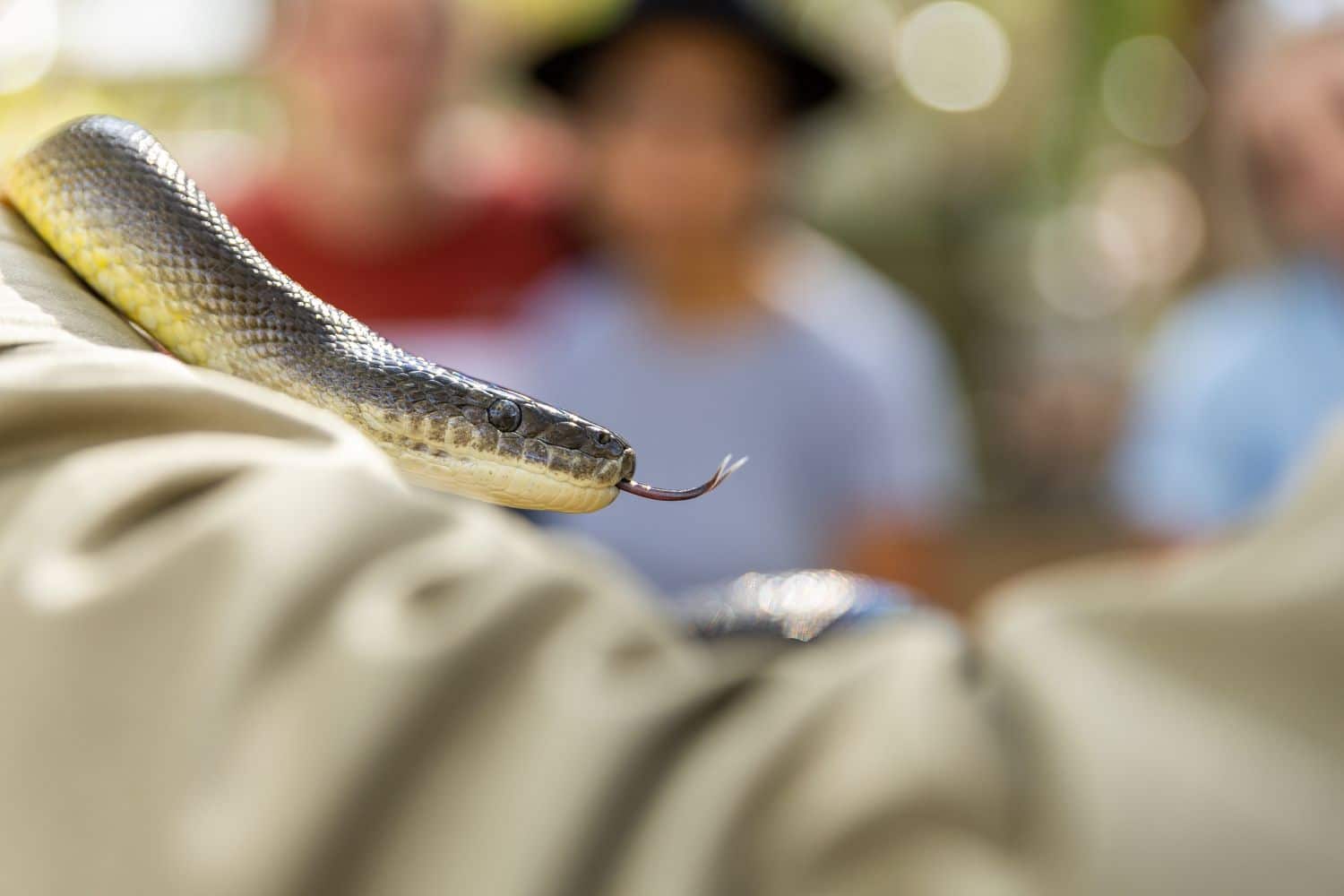This species is unique to Australia, occurring only in the tropics of Queensland, the Northern Territory and Western Australia. The preferred habitat is upstream freshwater billabongs, swamps and rivers, although it will move into tidal waters closer to the coast if not threatened there by Estuarine Crocodiles.
HOW ARE THEY DIFFERENT FROM ESTUARINE CROCODILES?
Apart from their much smaller size, Freshwater Crocodiles have narrower snouts and sharper teeth. The scales are light brown with darker bands on the body and tail. They move overland more readily than Estuarine Crocodiles, using a galloping gait to move between pools of water. Speeds of up to 18 kph (11 mph) may be obtained, but the animal is soon exhausted.
Otherwise, the body form and adaptations for hunting are similar to those described for the Estuarine Crocodile.
SIZE & LONGEVITY
Freshwater Crocodiles are much smaller than Estuarine Crocs. Males can grow to about 3m (9.75 feet) but animals over 2.5m (8.1 ft) are rare. Females rarely grow bigger than about 2m (6.5 ft) in length.
It takes years to reach this size. A male of breeding size may be 17 to 20 years old. By then he will be about 1.68m long (5.5 ft) and weigh about 14kg (31 lbs). Females may mature at about 15 to 20 years of age, when they reach a length of about a 1.5m (4 ¾ ft) and a weight of about 9.5kg (21 lbs).
Freshwater Crocodiles can certainly live for 40 to 60 years, and possibly up to 100 years of age! Individual growth rates vary greatly depending on the availability of food, so size is no indicator of age. In fact, rocky habitats far upstream, mature animals may be only half the size of well-fed crocs of the same age living farther downstream, where food is more plentiful.
DIET & HUNTING BEHAVIOUR
The most commonly eaten foods are insects and fish. Freshwater Crocodiles will also eat crustaceans such as shrimps and crayfish, and spiders, frogs, lizards, snakes, birds and mammals.
All food items taken are very small.
Like the Estuarine Crocodile, the Freshie is an ambush hunter, lying motionless in shallow water near the water’s edge for small creatures to venture close. It will then snap its head sideways with a lightning-fast motion, capturing a fish or insect in its sharp teeth.
During the dry season, when freshwater pools dry out and shrink, food is less available, and the crocodile will generally lose weight.
BREEDING
Freshwater Crocodiles breed towards the end of the dry season, between July and October. During courtship the female raises her snout in the air to present a submissive posture tot eh male. They will touch and rub chins. Mating them occurs in the water.
The female digs a nesting hole in a sandbank close to a permanent body of water and lays an average of 20 eggs. Clutch size can vary from 4 to 30 eggs.
As with Estuarine Crocodiles, the temperature of incubation determines the sex of the hatchlings. An average temperature of 32 C (89.6 F) will produce male hatchlings, while a slightly lower or higher temperature will result in female hatchlings.
The female does not protect her nest during incubation, and many eggs are taken by goannas and feral pigs. An early wet season can also cause flooding of the nest site, drowning the embryos.
HATCHING
About 2 ½ months after laying her eggs, the female again starts to take an interest in the nest. When the hatchlings start calling from within the eggs, she will excavate the eggs and carry her young to the water in her mouth. She then stays close to her young to protect them for a variable period of time. Even so, only about 1 out of every 100 hatchlings survives to maturity.
STATUS IN THE WILD
Freshwater Crocodiles have been protected from hunting for the past 30 years. They are not considered to be endangered; the wild population is estimated to be about 100,000 individuals. As with Estuarine Crocodiles, destruction of habitat is now the main threat.
Small-scale farming and ranching programmes as well as wildlife parks such as Billabong Sanctuary give Freshies an economic value, and an opportunity for people to see them up close and learn more about these fascinating reptiles.
